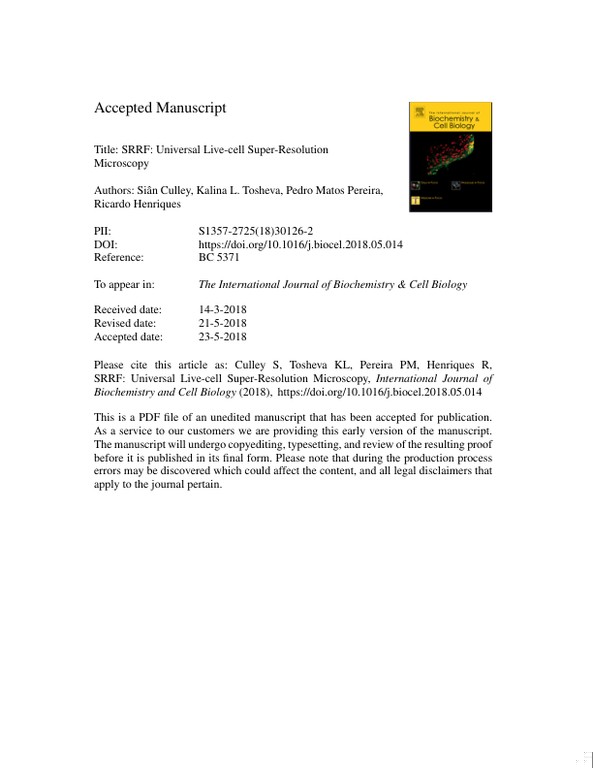SRRF - Universal live-cell super-resolution microscopy
Technologies: NanoJ-SQUIRREL () and NanoJ-SRRF ()
Paper published in The international journal of biochemistry & cell biology, January 2018
Publisher: Pergamon

The manuscript titled "SRRF: Universal Live-cell Super-Resolution Microscopy" by Culley et al. describes a novel analytical approach called Super-Resolution Radial Fluctuations (SRRF) for live-cell super-resolution microscopy. SRRF is a method that enables routine cell biology imaging experiments to take advantage of super-resolution imaging without the need for specialized microscopes or fluorophores. The approach is based on measuring local radial symmetries in the image, which act as a proxy for the positions of molecules. The radiality transform only considers the spatial information within the images, and the temporal information is preserved following transformation. The resolution of the final image scales with the degree of fluctuations exhibited in the raw data. The manuscript demonstrates the versatility and straightforwardness of SRRF analysis by showcasing its application to data acquired using different microscopes, including confocal, laser-based widefield, and LED-illuminated widefield microscopy. The authors also discuss the potential future developments of SRRF, such as its compatibility with modern detectors and machine learning to enhance its imaging capacity.